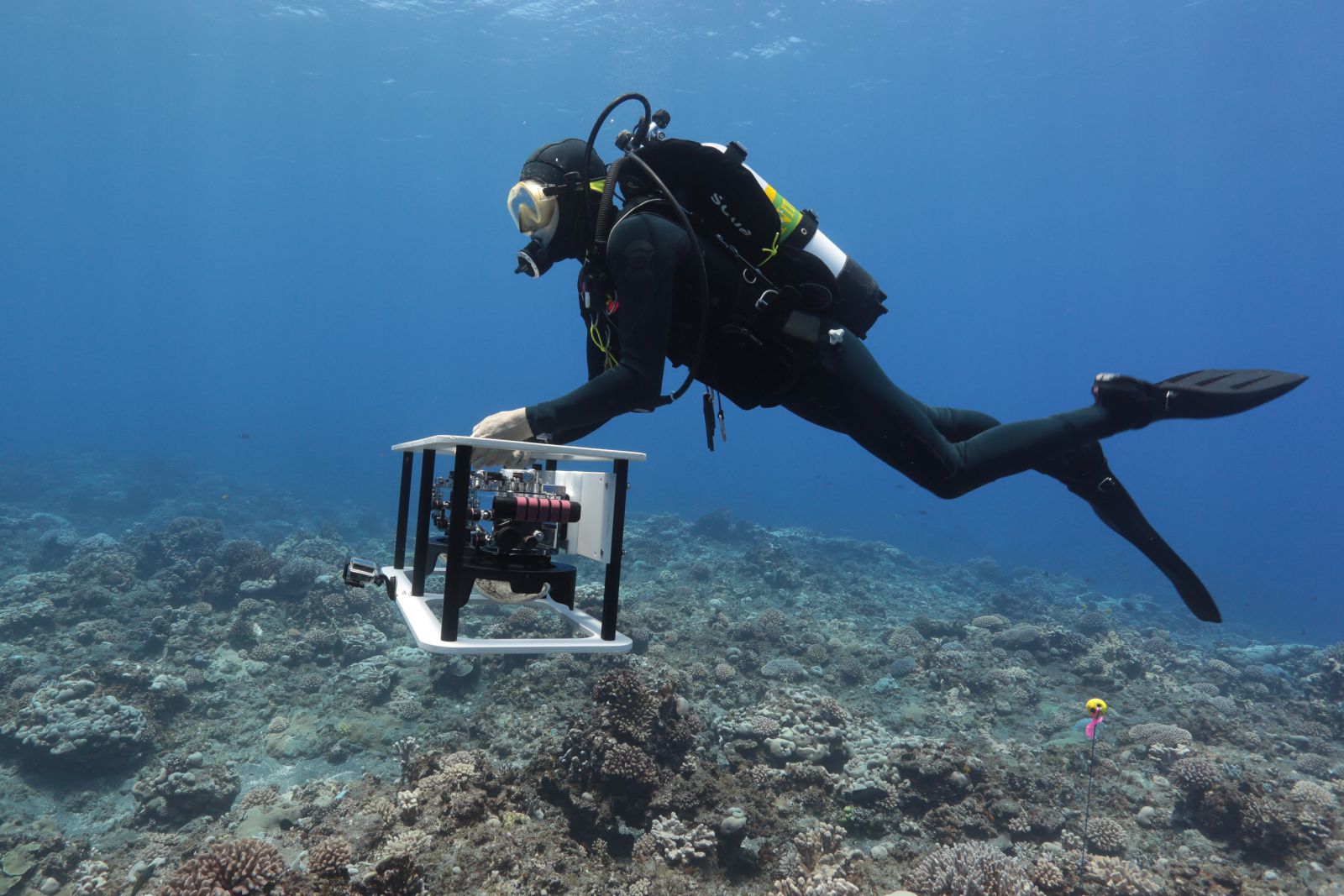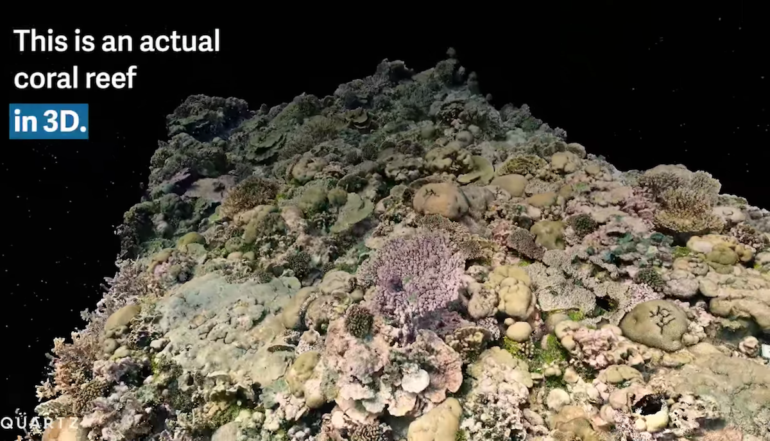The hardest part about studying coral reefs in the wild is the limited amount of time scientist and scuba divers can spend underwater. A new project dubbed the 100 Island Challenge is finding ways around this time restrictive barrier, by photographing coral reefs and creating digital 3D renders which can be studied in detail and used to watch how populations change through time.
The 100 Island Challenge is a collaborative effort based at Scripps Institution of Oceanography to describe the variation of coral reefs from across the globe. Jennifer Smith, Stuart Sandin and their team from Scripps are studying the changes taking place on 100 coral reef systems around the world.
Using this new technique scientist can look at the interacting effects of oceanography, geography, and human activities, and how they are affecting the structure and growth of coral reef communities. To gather reef data the team uses classical methods for collecting high-resolution data (fish, benthic, oceanographic) combined with large area reef imagery.
To study the community ecology of coral, a long-lived organism, two surveys (separated by 2-3 years) for each are conducted around tropical islands. These studies and the 3D reef imagery provides an invaluable opportunity to document the structure of the reefs as well as document (potential) change through time.
 By using a large-scale geographic scope the project can span a variety of environmental conditions where coral reefs are found, and by comparing the survey data through time, scientists can gain insights into the workings of this ecosystem.
By using a large-scale geographic scope the project can span a variety of environmental conditions where coral reefs are found, and by comparing the survey data through time, scientists can gain insights into the workings of this ecosystem.
One of the interesting findings of this study was a surprising, and hopeful, glimpse of the current state of coral reefs.
“We’ve seen evidence of health pretty much everywhere,” says Sandin. “This isn’t saying that every reef is thriving, and every reef has stayed immune to climate change. But what we’re seeing is that after a reef dies, organisms grow.” Call it the Jurassic Park effect: life finds a way. [Quartz]



